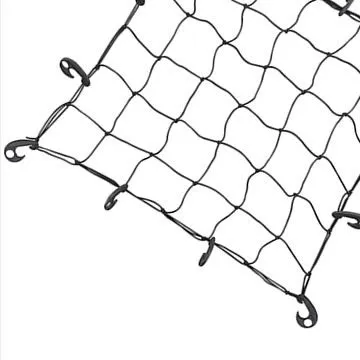- Afrikaans
- Albanian
- Amharic
- Arabic
- Armenian
- Azerbaijani
- Basque
- Belarusian
- Bengali
- Bosnian
- Bulgarian
- Catalan
- Cebuano
- Corsican
- Croatian
- Czech
- Danish
- Dutch
- English
- Esperanto
- Estonian
- French
- German
- Greek
- Hindi
- Indonesian
- irish
- Italian
- Japanese
- Korean
- Lao
- Malay
- Myanmar
- Norwegian
- Norwegian
- Polish
- Portuguese
- Romanian
- Russian
- Serbian
- Spanish
- Swedish
- Thai
- Turkish
- Ukrainian
- Uzbek
- Vietnamese
Noy . 11, 2024 19:36 Back to list
what is ceiling grid made of
What is Ceiling Grid Made Of?
A ceiling grid, often referred to as a suspended ceiling, is a framework that supports ceiling tiles and other materials, creating an aesthetically pleasing and functional ceiling. It plays a crucial role in modern construction, offering not only a sleek finish but also facilitating access to plumbing, electrical wiring, and HVAC systems hidden above. Understanding what a ceiling grid is made of is essential for anyone involved in building design or renovation, as it impacts not only the ceiling's performance but also its longevity and maintenance.
Primary Materials Used in Ceiling Grids
Ceiling grids are typically made from several materials, each chosen for its unique properties and benefits. The most common materials include
1. Metal The majority of ceiling grid systems are constructed from metal, primarily galvanized steel or aluminum. - Galvanized Steel This material is coated with zinc to prevent rust and corrosion, making it ideal for areas with high humidity or potential moisture exposure. Galvanized steel grids are sturdy, providing excellent strength and durability while remaining relatively lightweight. - Aluminum Aluminum grids can be used for specific aesthetic purposes since they can be more visually appealing and customizable with finishes. They are also resistant to corrosion, making them suitable for various environments.
2. Plastic In certain applications, particularly in moisture-prone areas like bathrooms or kitchens, plastic gridding systems can be used. These grids are lightweight and resistant to water, but they may not provide the same level of structural support as metal grids.
3. Wood Though less common, some designers opt for wooden ceiling grid systems to achieve a specific aesthetic, particularly in residential settings or design-centric commercial spaces. Wooden grids can be visually striking but require treatment to prevent warping or damage from moisture.
4. Composite Materials Some modern ceiling grid systems involve composite materials that blend various substances to create a resilient, lightweight product. These composites can offer the benefits of both metal and plastic, allowing for customization in design and performance.
Types of Ceiling Grids
The construction also varies based on the installation technique and application
. The two primary types of ceiling grids arewhat is ceiling grid made of

- T-bar Grid System This is the most common type of suspended ceiling grid, consisting of T-shaped metal sections that hold the ceiling tiles in place. The T-bar grid allows for easy installation and accessibility to wiring or plumbing above the ceiling and is designed to support a variety of ceiling tile materials, including acoustic tiles that help with soundproofing.
- Clip-in Grid System This system uses clips to secure ceiling tiles into place, typically providing a seamless look that is easy to maintain. The clip-in grid is popular in high-end commercial spaces where aesthetics are paramount.
Considerations in Ceiling Grid Selection
When choosing a ceiling grid, several factors must be considered to ensure that it meets the specific needs of the space.
1. Load-Bearing Capacity The grid must be able to support the weight of the ceiling tiles, lighting fixtures, and any other elements integrated into the ceiling. 2. Moisture Resistance In areas prone to humidity or moisture, such as bathrooms or kitchens, the chosen materials should resist water damage to prolong the life of the ceiling.
3. Aesthetic Appeal The visual design of the grid, including finishing options, should complement the overall decor of the room.
4. Accessibility If frequent access to the area above the grid is necessary, ease of removal and replacement of tiles should be a priority in the selection process.
5. Cost Budget constraints play a significant role in the choice of material and system. Balance between durability, aesthetics, and cost is crucial.
Conclusion
Understanding what ceiling grids are made of is vital for making informed construction decisions. With options ranging from durable metals to lightweight plastics and aesthetically pleasing wood, it’s essential to choose the right material and system to meet the specific demands of your space. Whether it's for a commercial space or a residential home, the right ceiling grid will not only enhance the functionality of the area but also contribute significantly to the overall design and look of the room. Investing time in selecting the appropriate ceiling grid will yield benefits in longevity and satisfaction.
-
Transform Interiors with PVC Gypsum Ceiling: A Stylish, Durable, and Moisture-Resistant SolutionNewsMay.19,2025
-
The Smart Interior Upgrade: Discover the Durability and Versatility of Gypsum Ceiling Access Panel SolutionsNewsMay.19,2025
-
The Smart Choice for Interior Design: Discover the Value of PVC Gypsum Ceiling SolutionsNewsMay.19,2025
-
Mineral Fiber Ceiling Tiles: The Smart Blend of Performance and AestheticsNewsMay.19,2025
-
Mineral Fiber Ceiling Tiles: The Superior Choice Over Gypsum for Sound and Fire SafetyNewsMay.19,2025
-
Mineral Fiber Ceiling Tiles: Eco-Friendly Strength and Style for Every CeilingNewsMay.19,2025







